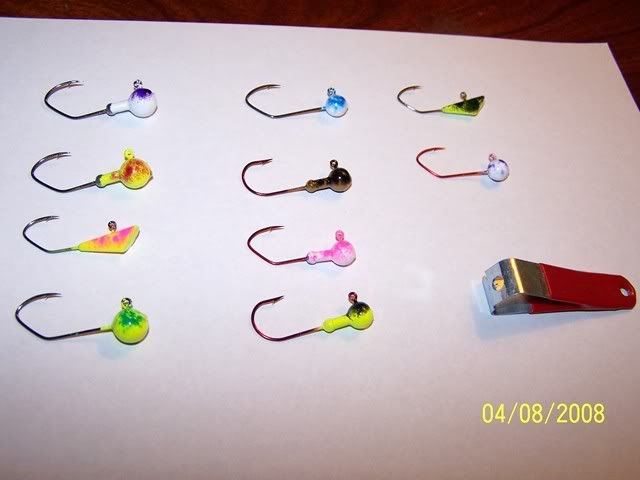
You will inevitably spill some powder. Paper plates and/or newspaper will save time.
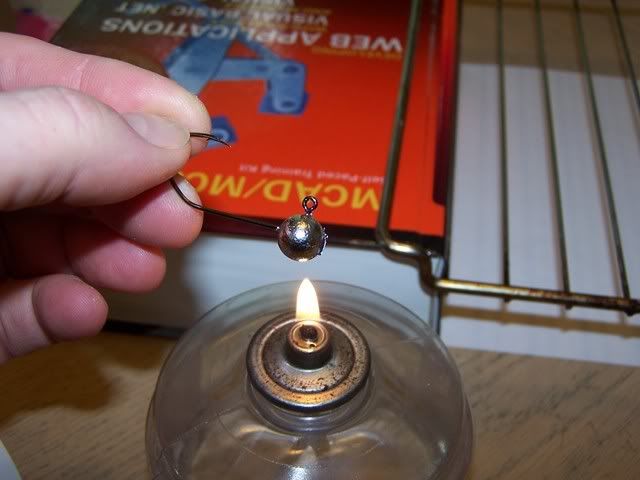
I like to use candles to heat the heads but a lighter will also work. If you decide to use a candle, make sure it's unscented. These liquid survival candles work very well and last forever.
Heat the head to the desired temperature. The amount of time it takes varies so you'll just have to experiment to figure out how long to heat it. Larger jigs require more time than smaller jigs. Hold the jig just above the flame -- DO NOT put the jig in the flame or it will get coated with black carbon. (Paint will not stick as well to a carbon-coated jig head.)
Here's an interesting observation: It is not possible to heat the jig head too hot for pearl white. For some reason, it is impossible to pick up too much paint even if the jig is very hot. I think pearl white sticks to the lead but will not stick to itself. One of my favorite tricks to to heat the jig extra hot, dip it in pearl white, and then dip it in "glow" -- which doesn't really have a color. Using glow by itself results in a dull gray jig, but adding it as a second coat over pearl white is awesome.

Now it's time to dip the jig. I like to use curved needle-nose pliers to grab the jig by the eye. I hold the jig by the hook bend to heat it because I don't want the pliers to get hot or the paint will stick to them. Grabbing the jig by the eye allows you do dip just the head without getting any paint in the hook eye. If you prefer, you can just hold it by the bend but you'll have to clear the eye later.
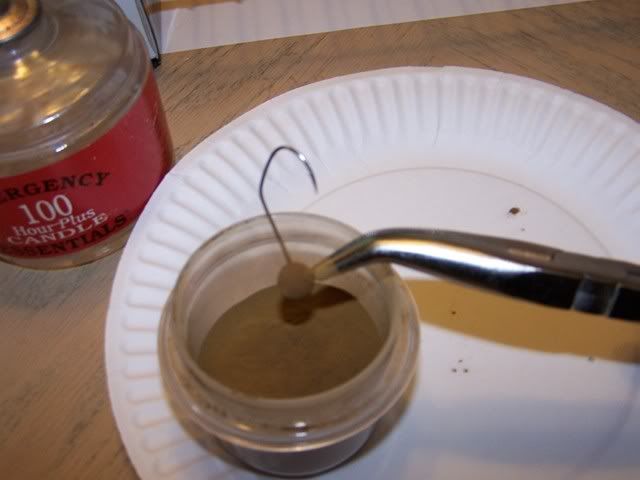
If you dip the jig into the powder and it smokes, it's WAY too hot. If you dip it and the paint looks shiny it's also too hot. Don't leave the jig in the paint for more than one second or it will pick up too much paint. Get it in and out quick. If the head is heated to the correct temperature, it will be completely coated with paint and no metal should be visible. If you can see the lead through the paint, the jig is not hot enough. To correct this, just heat it a little more and give it another dip. Powder painting jigs is like cooking with spices -- adding more is easy, but taking away some when there's too much is difficult.
After removing the jig from the paint, give the pliers a couple of taps on the edge of the paint jar to remove any excess. This is very important. The jig should not look bumpy; the paint should look uniform.
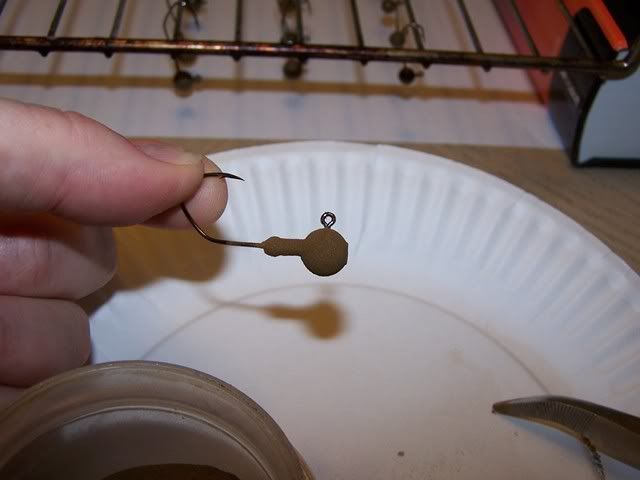
This is what they should look like.
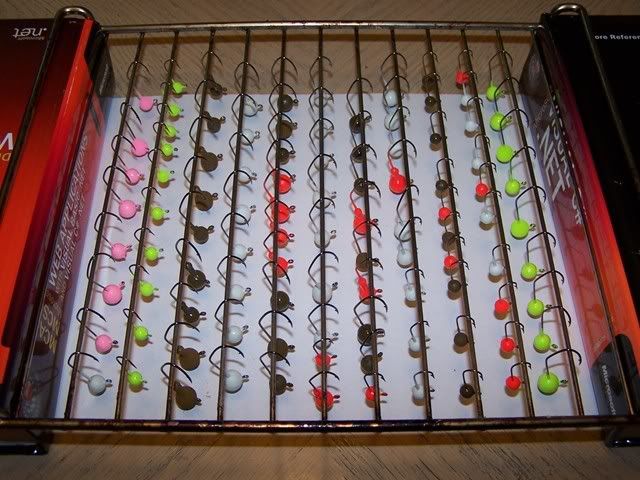
Hang the jigs on a rack and then bake them in the oven for 20 minutes. As I mentioned in a different thread, temperatures can vary by color. Black, purple, and blue have a lower melting temp than other colors. I bake them at 325. If you bake them at 350 as the jar recommends, most of the paint will drip off and coat the bottom of your oven. The paint that stays on the jig head will be too thin and chip off quickly.
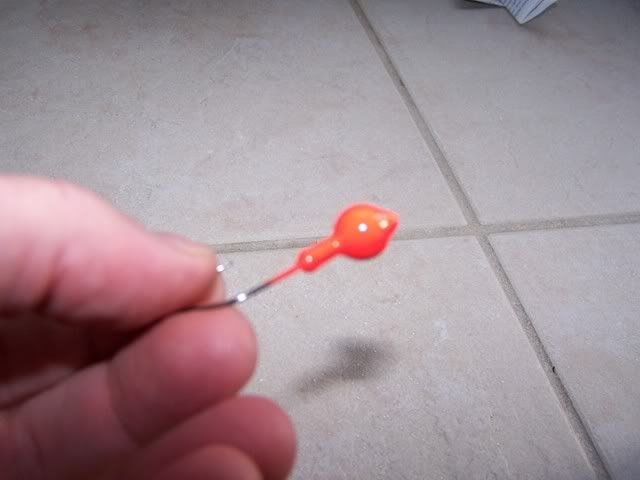
If the jig has too much paint it's not the end of the world. They will have a "drippy nose", but the fish don't care. Here's a pic of one that had too much paint on it. Looked fine before going into the oven, but it looks like this now.
Hope this helps! If you have any questions, feel free to ask.

